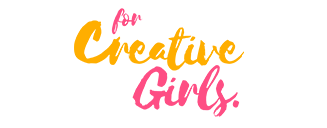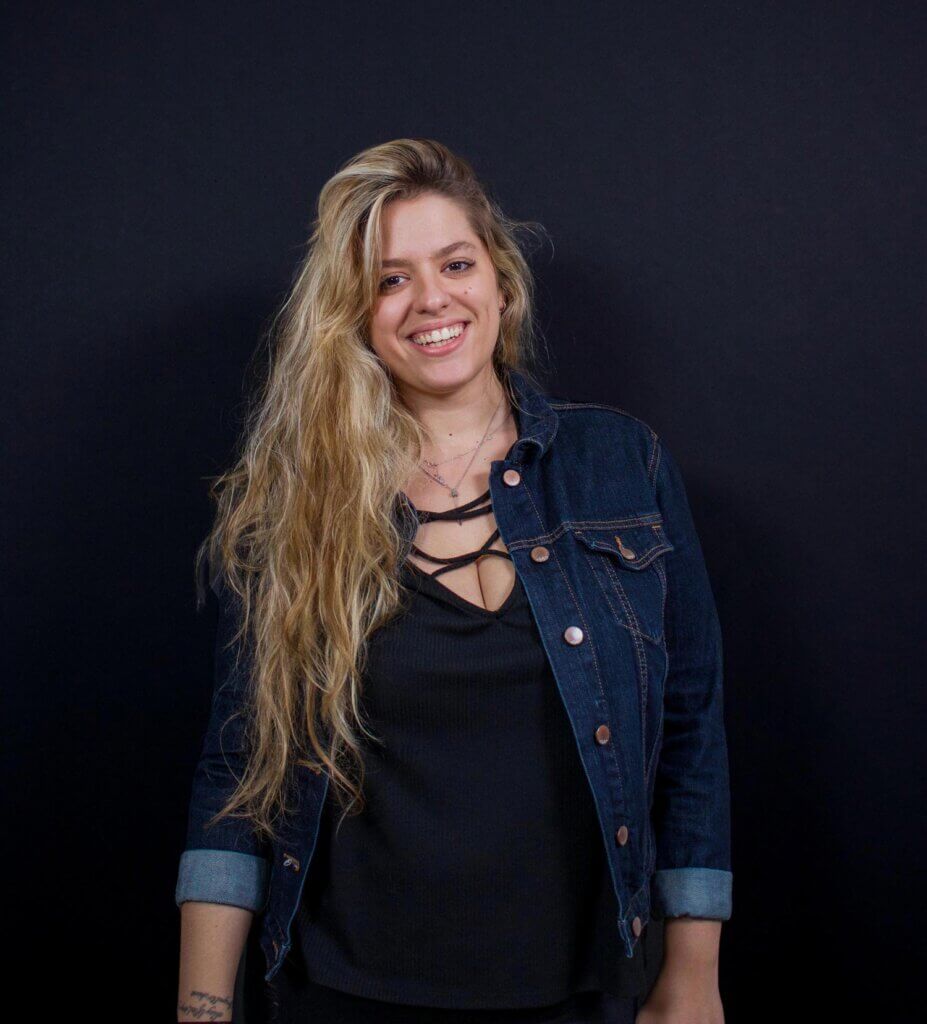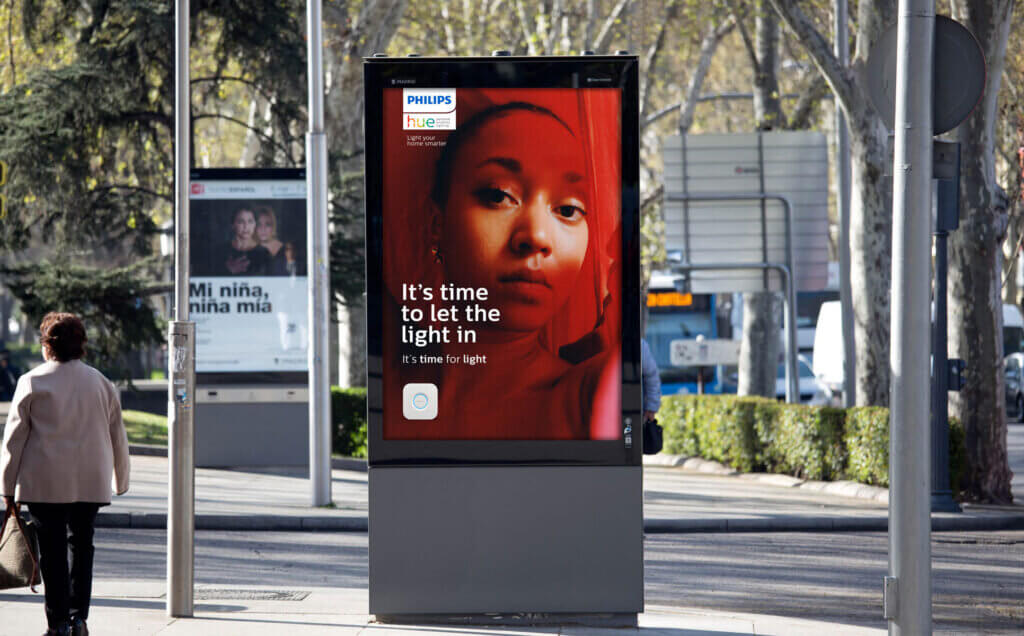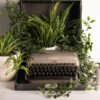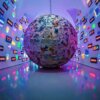Andrea Serrano Villaverde is one Art director who believes that in creating something new, conventional boundaries must be broken. She’s been doing this since 2016 for several clients such as Coca-Cola, Movistar Telecom, Microsoft, American Express, and Mercedes-Benz, also at different agencies around the globe like MRM Spain or Ogilvy New York. According to Chris Holzfiend, associate creative director at Sataachi & Sataachi Group, the art and design industry is lacking in art directors who are first artist, and he commended Andrea for being one out of the very few.
We had the privilege to catch up with Andrea during the Easter celebrations, and she delightfully shared with us amazing insights from her experience and creative process. She also broke down how she’s been able to navigate the art and design industry, and successfully manager her retinue of high profile clients. Let’s meet her!
Career and Experience as an Art Director
Hello Andrea, nice to meet you! Can you tell us about your background and how you got started as an art director? What inspired you to pursue a career in art and design, and what keeps you motivated?
First of all, thanks for having me. My name is Andrea Serrano Villaverde and, since 2016, I’ve been working as an Art Director for various international advertising agencies such as MRM, Publicis or Ogilvy. During my career, I’ve had the pleasure of working with a range of brands, including Coca-Cola, Microsoft, American Express, and Mercedes-Benz, on both 360 and digital campaigns from a European to a global level.
My love for advertising sparked during the final stages of high school when I stumbled upon a video called “The Power of Words” by Purple Feather, a marketing agency. Watching it was a game-changer for me, as I realized the power of storytelling and how it can impact people’s lives. So, I decided to change my medical career for advertising and to this day I don’t regret it.
What really keeps me going in advertising is the chance to make an impact. I’m a firm believer that breaking the mold is the way to innovate and create something truly new.
Can you describe your experience working with Coca-Cola, American Express, Philips, Mercedes Benz, and other high-profile clients? For instance, how did you get your first big gig?
I’ve worked with many clients like them, so I’m familiar with the type that needs quick turnarounds and a fast-paced environment. My experience in large agencies has taught me how to understand and communicate with these types of clients. I’m an active person, and my artistic direction has earned the trust of both my superiors and clients.
From your experience, what challenges would you say are common to working with high-profile clients, and how did you overcome them?
I remember this one time when I had to work on a campaign with a crazy tight deadline and a super small budget. It was definitely a challenge, but I was determined to produce good work regardless.
To tackle these challenges, I make sure to have a solid plan that covers everything from the project’s scope and timeline to its budget.
Another important aspect of working with high-profile clients is communication. I prioritize staying in touch with the account team and with the client itself through internal check-ins. That way, we can stay on the same page and make sure the project is heading in the right direction.
Basically, the key to working with this type of client is to be super organized and keep the lines of communication open at all times. It might sound simple, but it really can make the difference!
A 20 secs video of the Coca Cola Royal Bliss campaign, one of the Andrea Serrano Villaverde’s Campaign
The Creative Process
How do you approach the creative process when working on a project? Can you walk us through your workflow?
During the creative process, there often comes a point where you hit a wall and can’t seem to move forward. This is when you need to take a break and do something that doesn’t require a lot of mental energy, like reading a book, going for a walk, or listening to music with your headphones on. I find that this helps me regain inspiration and continue with the brainstorming process.
How do you collaborate with other team members, such as writers, photographers, and designers, to achieve a cohesive vision?
I’m all about building strong connections with the people I work with. To me, it’s crucial to have great relationships to create excellent work. That’s why I make it a priority to really get to know my colleagues and find ways to align our perspectives with the client’s objectives.
In my opinion, the key to achieving a cohesive vision is to cultivate a culture of collaboration, respect, and creativity. This enables team members to share their best ideas and work together towards a common goal.
How do you stay up-to-date with current design trends and technologies?
It’s actually quite easy. I keep up to date with all the latest news and trends in the industry. By following the work of my peers in different companies, I always find new sources of inspiration that help me stay creative and motivated.
Proudly Backing Campaign on Billboards at Time Square
Her Design Philosophy
What is your design philosophy, and how does it inform your work as an art director?
To me, less is more when it comes to design. I prefer clean and simple lines that are easy to read. Colors are a great tool to create a visually appealing design. However, the ultimate goal is to create a design that is not only visually pleasing but also memorable and impactful. I believe that good design should be easy to understand and evoke emotion in the viewer. I also love experiential work that makes the viewer feel like they are part of the ad. This can create a stronger impact on the customer and make the ad more memorable.
Can you share some examples of projects where you were able to incorporate your personal design style while still meeting the client’s goals?
Sure, I’ve had several projects where I was able to incorporate my personal design style while still meeting the client’s goals. One example was a branding project for a new restaurant.
To make sure I hit the client’s targets, I started by figuring out who their audience was and what the restaurant was all about. Then I came up with a design concept that featured clean lines and soft colors, giving off a vibe of elegance and freshness not seen before in a burger joint.
How do you balance creative expression with business objectives when working on a project?
My aim is to make designs that really pop, while still achieving what the client wants. To do that, I start by figuring out their goals and who they’re trying to reach. Then I create a design that connects with the audience and delivers the message the client wants to send.
From there, I brainstorm and come up with cool ideas that match the objectives. It’s not just about looking good, though – it’s about getting the results we want. Throughout the process, I stay in close touch with the client to make sure they’re happy with what we’re doing.
Campaign with the Phillip brand, one of the Andrea Serrano Villaverde’s campaigns
Advice for Aspiring Art Directors
What advice would you give to someone who wants to become an art director? How important is formal education in the field of art direction, and what skills do you think are essential for success?
Trusting your gut is key! You’ve got to have confidence in yourself and be willing to stand up for what you believe in. And of course, it’s important to stay on top of your game every single day. You’ve got to be a total advertising geek, know all the campaigns out there, so you can make sure your ideas are fresh and unique.
Of course knowing how to use programs like Photoshop, Illustrator, Figma…They are very important in our industry and we use them daily.
What are some common mistakes you see aspiring art directors make, and how can they avoid them?
I will say not being open to hear feedback about your work and make it personal. As an art director, you’re working as part of a team and need to be able to take feedback from other team members and adjust your designs accordingly. Collaboration can lead to even better ideas and designs than working alone.
Future of Art and Design Industry
How do you see the field of art and design evolving in the next few years?
What emerging technologies or design trends do you think will have the most significant impact on the industry?
AI and CGI, these types of technologies are essential for our industry and become very beneficial. We have to know how to adapt and make them ours. I think they can take advertising to a whole new level and it would have a huge impact on the viewer.
How do you stay ahead of the curve in a constantly evolving field like art and design?
Even running the risk of sounding repetitive… stay up-to-date and keep learning by regularly reading industry publications, attending conferences, and taking courses to learn new skills.
Being willing to experiment and try new things. Whether it’s exploring new techniques or pushing the boundaries of a project, being open to taking risks and stepping outside of my comfort zone can lead to breakthroughs and new discoveries.
Hope you find this helpful!
Here’s a link to some of her works
